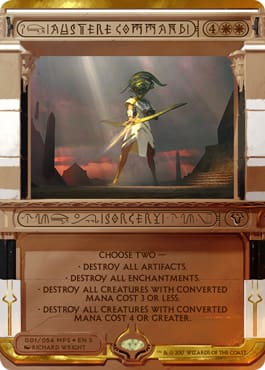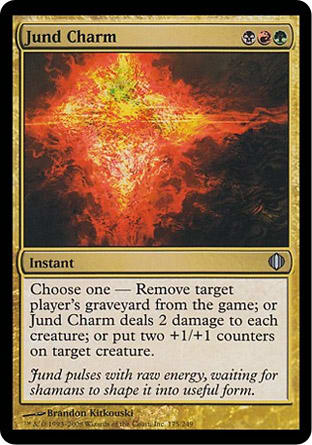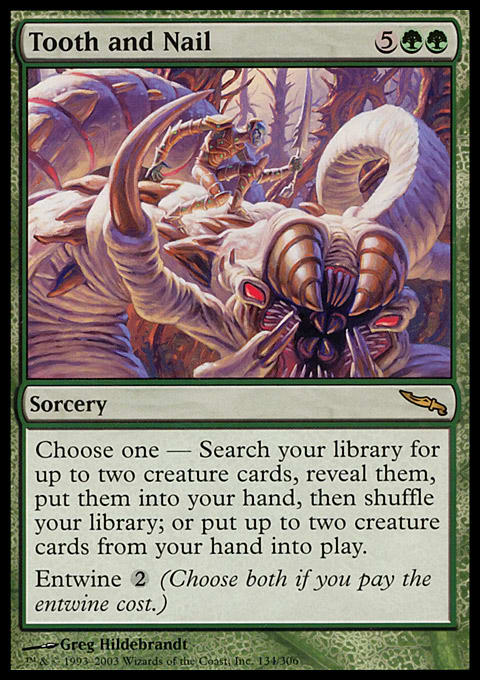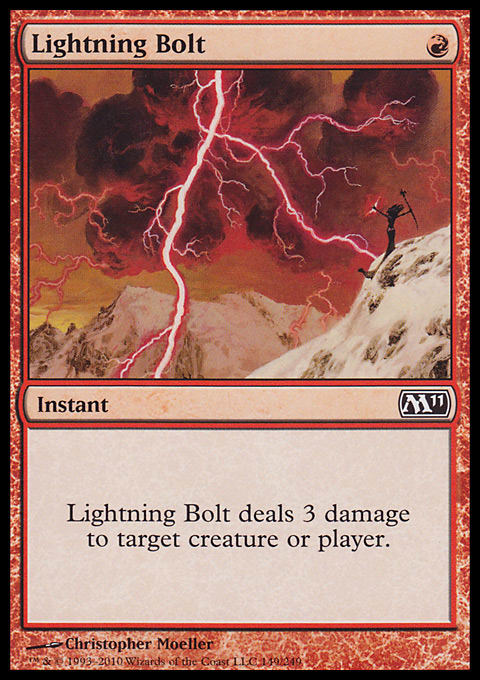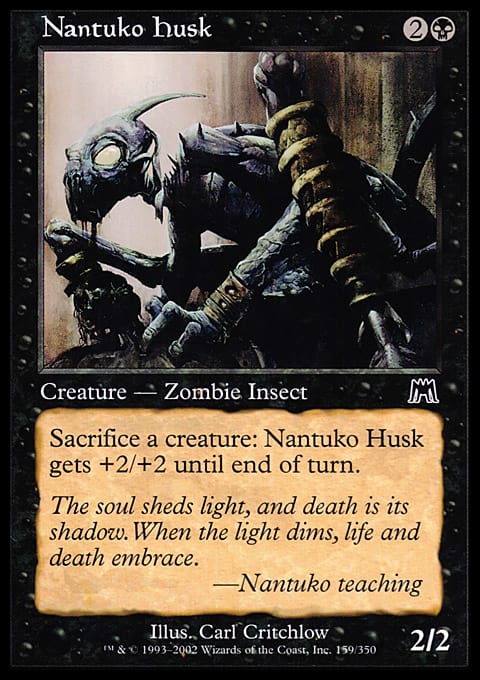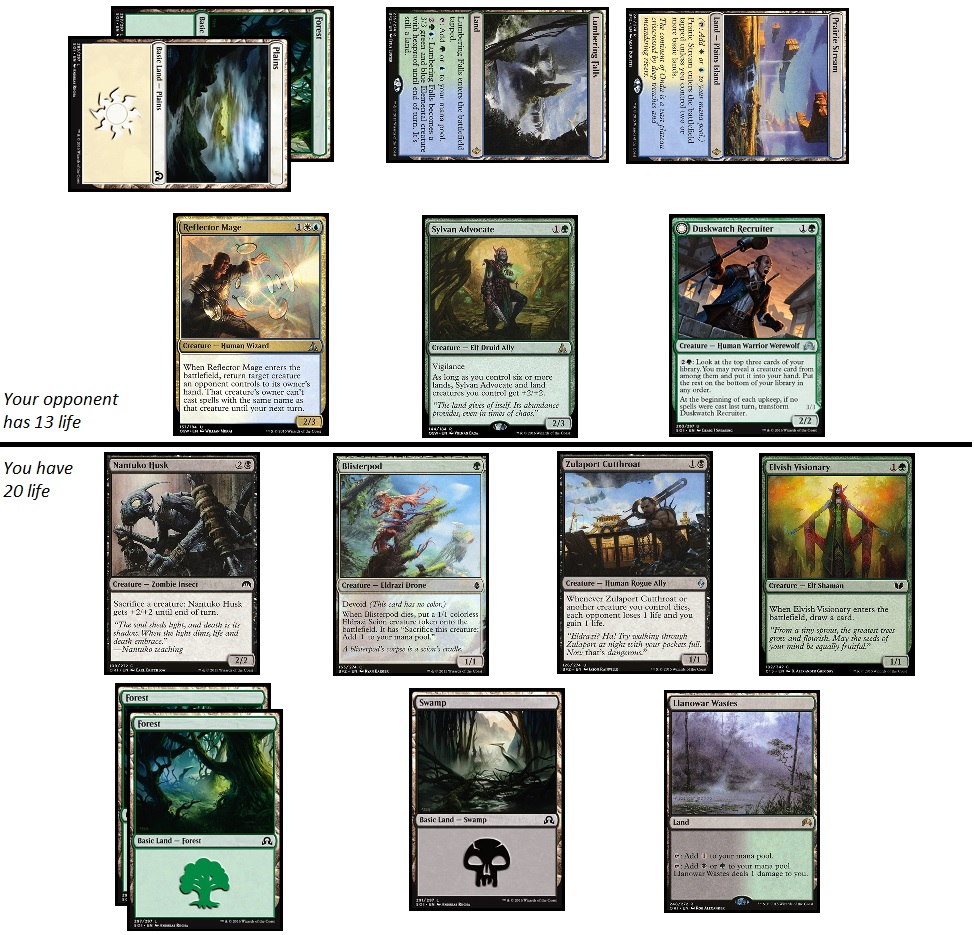Modal cards are the best cards in Magic. People don’t always realize that being a modal card doesn’t exclusively mean any of these cards:
Many cards that people don’t even think of as modal end up having laundry lists of different “modes” through their versatility. Knowing just how good a card can be stems from understanding the many uses that a card can have.
Consider Lightning Bolt.
Lightning Bolt has been so engrained in each Magic player’s head that it hardly takes any kind of explaining why the card should see play. Very few people actually take the time to understand the card and just play Lightning Bolt “because it’s good.” Lightning Bolt’s value becomes more apparent when one takes the time to analyze it as a modal spell:
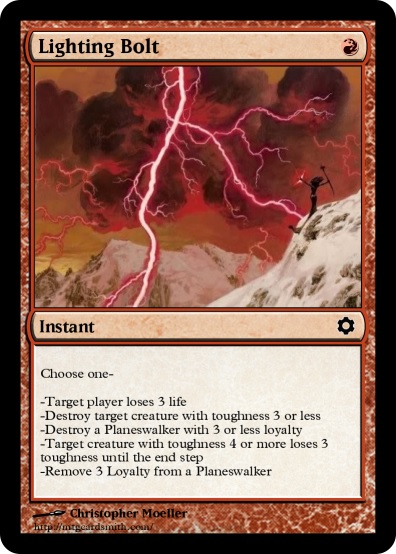
There’s naturally a bit of redundancy between some of the modes, but the idea is to highlight just how many ways a Lightning Bolt can be useful. Pointing 3 damage wherever the caster wants at the cost of a single red mana is an amazing bargain!
Modern Infect is an example of a deck that uses seemingly innocuous cards to great effect in ways that are a bit different than one would think. Consider the following decklist:
Infect ? Modern | Robert Wright, 25th Place, Star City Games Modern Open
- Creatures (14)
- 4 Blighted Agent
- 4 Glistener Elf
- 4 Noble Hierarch
- 2 Spellskite
- Spells (27)
- 2 Apostle's Blessing
- 2 Dispel
- 2 Spell Pierce
- 3 Become Immense
- 3 Groundswell
- 3 Mutagenic Growth
- 4 Might of Old Krosa
- 4 Vines of Vastwood
- 4 Gitaxian Probe
- Lands (19)
- 1 Island
- 2 Forest
- 2 Breeding Pool
- 4 Inkmoth Nexus
- 4 Windswept Heath
- 4 Wooded Foothills
- 2 Pendelhaven
- Sideboard (15)
- 3 Viridian Corrupter
- 2 Wild Defiance
- 2 Dismember
- 2 Dispel
- 1 Krosan Grip
- 3 Nature's Claim
- 2 Twisted Image
How would the average player answer if that person were to be asked, “How many counterspells are in this deck?”? There are a handful of ways to define counterspell, the most literal of which is a card that has the words counter and spell in the text box somewhere. In that case, there are four counterspells in the main deck and two in the sideboard. Case closed. Great article. Talk to you next week.
Perhaps another sect of players would argue that Vines of Vastwood is a counterspell that can serve as a pump spell as well. This is great! In a high number of situations, the Infect decks tend to use Vines of Vastwood as a spell that reads similarly to this:
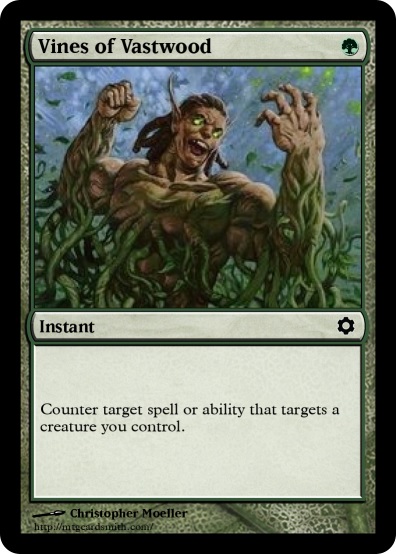
At this level, it isn’t too hard to lump Vines of Vastwood in with other counterspells and bring the total number of counterspells in the deck up to ten.
At this point, the question to ask is, What types of spells does the Infect deck generally plan to counter? The most common answer to this question is, Spells that interfere with the Infect pilot’s ability to stick 10 poison counters on to the opponent.
If that is the primary incentive for countermagic, it isn’t too farfetched to accept that Spellskite may be a counterspell that requires to caster to pay mana up front before there’s even a removal spell being cast. Think of Spellskite this way:
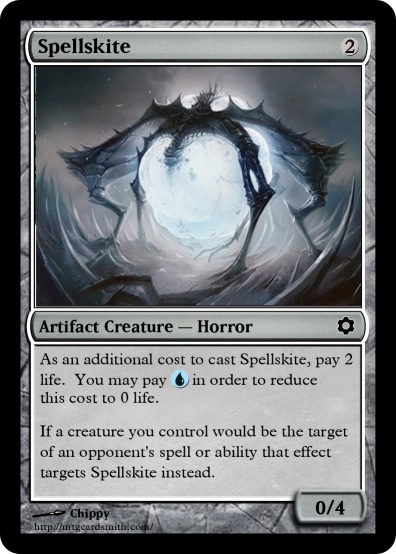
While not literally including the word “counter” anywhere on the card, Spellskite is still a singular card that ends up going to the graveyard in order to prevent an opponent’s removal spell from destroying the Infect player’s most important creatures.
Is it possible to apply this theory even further? Whenever the controller of a Giant Growth–esque effect uses it to prevent a creature from dying to damage- or stat-reduction-based removal, there’s a strong argument that Groundswell is being used to counter a Flame Slash. The point being made here is that majority of the Infect archetype’s power lies in the decks ability to use all of its cards in different ways, with all of them relating to killing the opponent via damage or poison counters.
Many of the most powerful decks in Standard today play piles and piles of cards that can be used in many different ways. Take a peek at this decklist from fellow Gathering Magic writer Jarvis Yu:
B/G Rite ? Shadows over Innistrad Standard | Jarvis Yu, Grand Prix New York, 19th
- Creatures (29)
- 3 Loam Dryad
- 4 Blisterpod
- 4 Catacomb Sifter
- 4 Duskwatch Recruiter
- 4 Elvish Visionary
- 4 Nantuko Husk
- 4 Zulaport Cutthroat
- 2 Liliana, Heretical Healer
- Spells (8)
- 4 Collected Company
- 4 Cryptolith Rite
- Lands (23)
- 4 Swamp
- 7 Forest
- 4 Hissing Quagmire
- 4 Llanowar Wastes
- 4 Westvale Abbey
- Sideboard (15)
- 4 Transgress the Mind
- 1 Ob Nixilis, Reignited
- 2 Ultimate Price
- 1 Clip Wings
- 2 Kalitas, Traitor of Ghet
- 2 Languish
- 3 Reality Smasher
These archetypes generally live or die by their sacrifice outlets, so both Nantuko Husk and Westvale Abbey tend to pull double-duty. I’ve already spoken in length on this particular archetype, but today, let’s focus on Nantuko Husk.
On its own, Nantuko Husk looks relatively unassuming, but in practice, it tends to throw its weight around a great deal more. Most of Nantuko Husk’s power level lies in the context of the deck that it is included in and its ability to be useful in a bevy of situations.
With a Nantuko Husk and another nontoken creature on the battlefield, Liliana, Heretical Healer is regularly a 3-mana Planeswalker that puts a 2/2 Zombie token onto the battlefield when she enters the battlefield. In a deck full of 1-power creatures with varying abilities, Nantuko Husk turns Zulaport Cutthroat into a 2-mana pseudo-Soulblast.
Imagine the following board state:
The player is at 20 life with Llanowar Wastes, Forest, Forest, Swamp, Elvish Visionary, Blisterpod, Zulaport Cutthroat, and Nantuko Husk.
In this particular scenario, the opponent is forced to block the Nantuko Husk, as that player will die otherwise (between the Blisterpod, the Eldrazi Scion it creates, and the other two creatures, the Nantuko Husk represents 14 points of damage through combat and Zulaport Cutthroat triggers), but the player is faced with a horrid trade in combat if and when electing to block. Any creature the player blocks with is going to be big enough to trade with a Nantuko Husk’s base stats, but after sacrificing a single creature, the Nantuko Husk lives through combat, and the Bant player loses a creature. This more or less equates to the opponent trading a 2/3 for a Blisterpod or Elvish Visionary in combat, which is at least a little bit embarrassing.
Nantuko Husk playing a role as a kill condition and a creature that creates a dynamic around trading weaker creatures for larger ones is an integral part of what makes the B/G Rite deck tick.
The most recent Pro Tour highlighted just how versatile the card Hangarback Walker can be in the G/W Tokens shell that Steve Rubin took all the way to first place:
G/W Tokens ? Shadows over Innistrad Standard | Steve Rubin, Pro Tour Shadows over Innistrad, 1st
- Creatures (16)
- 4 Sylvan Advocate
- 4 Thraben Inspector
- 4 Hangarback Walker
- 4 Archangel Avacyn
- Planeswalkers (8)
- 4 Gideon, Ally of Zendikar
- 4 Nissa, Voice of Zendikar
- Spells (11)
- 2 Secure the Wastes
- 4 Dromoka's Command
- 1 Evolutionary Leap
- 1 Stasis Snare
- 3 Oath of Nissa
- Lands (25)
- 7 Forest
- 7 Plains
- 3 Westvale Abbey
- 4 Canopy Vista
- 4 Fortified Village
- Sideboard (15)
- 1 Secure the Wastes
- 2 Clip Wings
- 3 Declaration in Stone
- 1 Evolutionary Leap
- 2 Lambholt Pacifist
- 1 Quarantine Field
- 1 Sigarda, Heron's Grace
- 3 Tragic Arrogance
- 1 Linvala, the Preserver
Multiple times over the course of the tournament there were games that may have been decided by other cards, but the role that Hangarback Walker played in conjunction with those cards was unmistakable. At least three different times over the course of the tournament, there would be a situation in which Steve would attack with his creatures, use Archangel Avacyn to save them mid-combat, and during his post-combat main phase cast Hangarback Walker with X equal to 0 in order to transform Archangel Avacyn the very next turn.
Using Hangarback Walker to instantly transform Archangel Avacyn was something that hadn’t really been in a huge deck on the Pro Tour. There had been a handful of Aristocrats decks that used it to transform Liliana, Heretical Healer (looking at you, Christian Calcano), but never before had something so impactful come from choosing to “just discard” the Hangarback Walker for seemingly no effect.
Whenever brewing a new deck or trying to think of things that can augment a card in an existing archetype, using thought processes similar to the ones above will absolutely take your deck-building game up to the next level. Contemplating every use that a card could have and trying to build a context in which those uses are amplified is the make-or-break difference between an average player and an exceptional deck-builder.
















